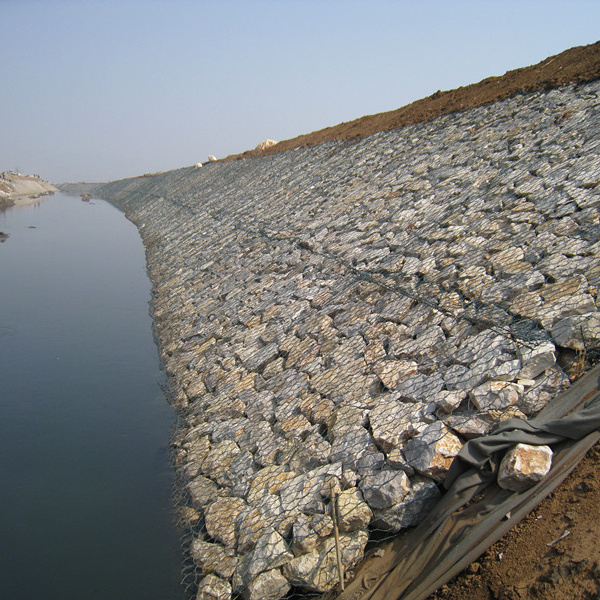Nov . 06, 2024 10:45 Back to list
Wholesale Gabion Rock Sizes for Various Landscape and Construction Needs
Wholesale Gabion Rock Size A Comprehensive Guide
When it comes to construction and landscaping projects, the choice of materials can significantly dictate both the aesthetic appeal and structural integrity of the finished product. One of the increasingly popular materials in these projects is gabion, a term that refers to a wire mesh container filled with rock, concrete, or other materials. Used in a variety of applications from erosion control to decorative walls, gabions are versatile components that can be tailored to meet specific needs. Among the factors that influence the effectiveness and appearance of gabions is the size of the rocks used in them. This article explores the importance of wholesale gabion rock size and how it can impact your project.
Understanding Gabions
Gabions are traditionally used for civil engineering and landscape architecture. They were initially created to stabilize soil structures, protect river banks, and manage erosion. With the rising awareness of eco-friendly practices, gabions have been embraced for their ability to blend with natural landscapes. They can be designed in various forms, such as walls, fences, and even decorative elements in gardens, ensuring that they meet a wide range of aesthetic preferences.
Why Rock Size Matters
One of the most critical aspects of constructing gabions is selecting the right rock size
. The size of the rocks plays a crucial role in determining1. Stability Larger rocks provide better stability and resistance to shifting under pressure or environmental change, while smaller rocks can shift more easily, potentially compromising the integrity of the structure. For applications that require high durability, such as erosion control or retaining walls, a larger rock size is typically recommended.
2. Aesthetic Appeal The visual aspect of gabions can be substantially influenced by the size and shape of the rocks. Larger stones give a rugged, natural look, while smaller pebbles can impart a more refined, polished appearance. Depending on the project’s purpose – whether practical or decorative – choosing the right rock size is essential for achieving the desired aesthetic outcome.
3. Drainage Effective drainage is vital in preventing water accumulation, which can lead to structural failure. A mix of larger and smaller rocks can create voids that promote drainage, ensuring the gabion remains intact in adverse weather conditions.
wholesale gabion rock size

4. Weight The size of the rocks will also influence the overall weight of the gabion. Heavier rocks provide a solid foundation, making them ideal for environments subjected to heavy flooding or erosion. However, it is important to balance weight with ease of transport and installation.
Wholesale Options
When considering the incorporation of gabions into your projects, opting for wholesale suppliers can be a smart choice. Buying in bulk often results in significant cost savings, allowing you to allocate funds elsewhere in your project. Furthermore, wholesale suppliers typically offer a variety of rock sizes, enabling you to select the best fit for your specific needs.
- Access to Different Sizes Wholesalers often provide a diverse range of options, from small gravel-sized stones to massive boulders. This flexibility allows you to customize your gabion structures based on both practical requirements and design preferences.
- Consistent Quality Reputable wholesale suppliers maintain quality control standards, ensuring that the rocks you receive are consistent in size and composition. This uniformity is essential for the structural integrity and visual appeal of your gabions.
- Volume Discounts Purchasing wholesale not only saves on individual costs but can also provide additional discounts on larger orders, further cutting expenses.
Conclusion
In conclusion, selecting the appropriate wholesale gabion rock size is a vital consideration for anyone looking to use gabion structures in their projects. The size of the rocks directly affects stability, aesthetics, drainage, and weight. By sourcing these materials from wholesale suppliers, you can ensure a range of options while also benefitting from cost savings. Whether you're working on a large-scale construction project or a modest landscaping endeavor, understanding the implications of rock size in gabions is essential for achieving both functional and visual successes in your work.
-
Installation Tips for Gabion Wire Baskets in Erosion Control Projects
NewsJul.21,2025
-
High-Quality Gabion Basket Barriers for Retaining Wall Systems
NewsJul.21,2025
-
Gabion Welded Wire Mesh Applications in Flood Prevention Systems
NewsJul.21,2025
-
Designing Aesthetic Gabion Wall River Bank
NewsJul.21,2025
-
Creative Garden Gabion Baskets Designs Blending Form and Function
NewsJul.21,2025
-
Cost-Effective Gabion Mesh Panels
NewsJul.21,2025
-
Understanding Load-Bearing Capacity of Gabion Boxes
NewsJul.17,2025






